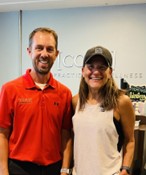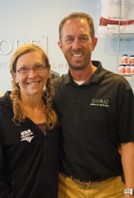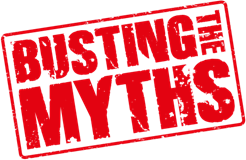 The Roanoke valley has been home to a number of great running athletes for many years. The rolling hills, flat greenways, and mountainous trails have given area runners the perfect training ground to succeed in racing events around the world. Since the addition of several great running and triathlon events, the popularity of training and racing has grown tremendously the last few years. It has been our pleasure to be able to treat many of these athletes and to partner with them during their training to give them the best chance for a successful race.
The Roanoke valley has been home to a number of great running athletes for many years. The rolling hills, flat greenways, and mountainous trails have given area runners the perfect training ground to succeed in racing events around the world. Since the addition of several great running and triathlon events, the popularity of training and racing has grown tremendously the last few years. It has been our pleasure to be able to treat many of these athletes and to partner with them during their training to give them the best chance for a successful race.
Every season I am confronted with many questions about how to train for a marathon or other similar endurance events. Many runners unfortunately turn to unspecific recommendations and even myths when deciding how to plan their marathon training. In this newsletter, I hope to run through some of these considerations and dispel some of the common misconceptions around marathon training in an attempt to demystify the nuisances of the process.
More Mileage is Always Better
Many people are under the assumption that in order to complete a marathon, you need to log 70-80 miles per week. This is certainly not uncommon for the competitive marathoner as elite runners are routinely logging 90-110 miles per week in preparation for major marathons. However, this highlights a major difference in who is racing this marathon. Is the runner completing a marathon or are they planning to race this marathon? For professional runners, the goal is to race this 26.2 mile distance as quickly as possible at a level of performance in the top 1% of the world. Training for this sort of a feat is a full time job, hence why they are able to treat this activity as their profession or at least a full time hobby.
For the recreational runner looking to complete their first marathon, they are likely not being paid to take months off of work to devote solely to marathon training. As a result, the amount of time that can be devoted to training will be less, but can certainly still accomplish the task at hand. Depending on the amount of mileage you have handled in the past, many people can successfully complete a marathon on 4 days of running per week logging anywhere from 40-50 miles per week with a peak long run of 16-20 miles. For those who have some experience with handling this type of weekly mileage or marathon distance in the past, you might fare better at 50-60 miles per week and a peak long run of 20 miles or slightly more.
If you are worried about being under trained as you approach your marathon, Pam Rickard, a local legend with over 100 marathons to her credit, tells us that “Going into a marathon undertrained is infinitely better than going in overtrained.” Pam will be entering into the Tokyo marathon later this year, her 5th of the 5 major world marathons. She concurs with what we stated above for those who are looking to simply finish a marathon “Two 18-20 mile runs are sufficient in the buildup to a marathon. The need to run several long 20-24 mile runs is not accurate for most runners.”
Missing A Workout Is A Bad Thing
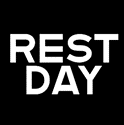 Multiple Ironman Triathlon World Champion, including the 2023 Ironman 70.3 World Championships recently held in Finland, and triathlon coach Beni Thompson reminds us that the myth of thinking that missing a workout is a bad thing, needs to go away. She believes we need to listen to our bodies as she states “The key to success in reaching a goal is consistency. However, if all indicators are telling you that mentally and physically you need to rest..then take a REST day.” She encourages those runners to change the workout so that it is more productive than counter productive.
Multiple Ironman Triathlon World Champion, including the 2023 Ironman 70.3 World Championships recently held in Finland, and triathlon coach Beni Thompson reminds us that the myth of thinking that missing a workout is a bad thing, needs to go away. She believes we need to listen to our bodies as she states “The key to success in reaching a goal is consistency. However, if all indicators are telling you that mentally and physically you need to rest..then take a REST day.” She encourages those runners to change the workout so that it is more productive than counter productive.
As we work with runners here in the office I have always tried to encourage runners to be careful of the junk miles as they frequently cause a breakdown of good running form. The poor running form will often lead to overloading the soft-tissues of the lower extremity which will lead to an overuse injury. Injuries like Achilles tendonitis, IT Band Syndrome, hip bursitis, piriformis syndrome, and plantar fasciitis are just a few injuries that can be caused by not resting the legs properly. Coach Thompson states it well when she reminds us that “Rest helps rebuild muscular tissue and prepares you for improved performance.”
The Typical 12-16 Week Training Program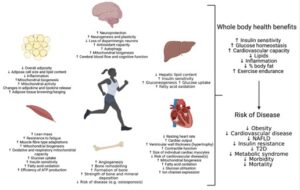
Muscles are the first body tissue to adapt when introducing some sort of routine training load. The traditional 12-16 week training program may or may not be enough time for a runner to train for a marathon. The most important factor when determining how much time you need to train for a marathon centers around the adaptability of the muscles to the training mileage outlined in the program. For instance, if you have only been running sporadically for the last few months prior to deciding to train consistently for a race 12-16 weeks from now, your tendons, ligaments, and bone will likely not be ready for the load they will experience over the course of 40-50 mile training weeks and/or on race day. In these cases, we would need to plan several training cycles building up to this final 12-16 week training block in order to maximize your potential to show up to the start line healthy and complete the race. Just like running a marathon, slow and steady wins the race when it comes to achieving physiological adaptations from marathon training.
David Angell reminds us that training loads should have some up and down weeks. Angell says “Each week doesn’t have to include a linear increase in total mileage or extension of the long run. It is ok to hang out at a certain level or even drop down a bit to absorb the training before making increases. If you are increasing every week without including some down weeks to adapt it’s very easy to dig yourself into a hole.”
Training Progression Is The Same For Everyone:
The general rule of thumb for the novice runner when it comes to mileage progression is no more than 10% increase each week with regularly spaced regression weeks to allow for proper tissue adaptation without outpacing capacity. Members of the elite/professional running population can often handle more aggressive progressions. However, there are many reasons their performances rank in the top 1% of the running community. Interestingly enough, the biggest predictor of running related injuries in the recreational population was weekly mileage while the biggest predictor of running success in the professional population was also weekly mileage (Boullosa et al., 2020). When it comes to choosing a race, we must consider how long it will take for a runner to safely progress to a training volume that will allow them to complete their race day goals. This is where using a running coach is much more valuable than simply following an online training program. Deciding when and how to progress your training should be done with the input from several sources. The art of progressing through a training program should include some running data from your watch or heart rate monitor, how you feel about your body, your running coach’s plan and advice, and with the input of your chiropractor or therapist who is monitoring you for signs of overuse injuries.
Injuries Are Just A Part Of Training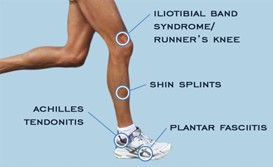
The myth that injuries are just a part of marathon training is foolish. Yes, many runners will present with some type of injury during their training, but this is not the norm. One of the biggest injury predictors in the running community is the history of a previous running injury. If you have experienced a running injury before, you have a much higher chance to re-injure the same area of the body or present with a new compensation pattern leading to a brand new running injury. When constructing a training plan, we need to take into account the runner’s injury history and what movements or loads typically provoke their symptoms. Runners with a history of more running related injuries may benefit from modifications to their training plan such as reduced running volume, increased aerobic cross training (i.e. biking, swimming, rowing, etc.), and/or resistance training in different planes to offload the repetitive sagittal plane running motion.
Liz Ackley, Professor of Exercise Science at Roanoke College states “In many social circles, runners liken pain, injuries, and physical burnout to the “merit badges” of the running community- don’t be fooled by this egotism! Markers of physical imbalances, these experiences are signals that your body needs something different; that you’re too focused on one element of training and are missing an important counterbalance. A lack of strength in stabilizing muscles, too much or too little flexibility along a muscular chain, or too much of the same type of training (think mileage!). Let your body tell you where your problems are in the form of pain signals. Listen to those signals! If you don’t, you’ll be sidelined with injury and unable to maximize your potential. Sometimes rest is the key, but oftentimes different forms of exercise is all you need.”
Ability To Recover
World class athletes not only have world class physical abilities they also have world class abilities to recover from training and injuries. Many of these athletes still go above and beyond leaving nothing to chance when it comes to their bodies. They are very particular when it comes to their nutrition, their hydration, and their use of healthcare professionals to help their body recover fast. In our office we use the tools of Active Release Technique, chiropractic, acupuncture, and dry needling to help our athletes recover from their training. Whether you are an elite runner preparing a world championship or an avid runner looking to finish your first marathon our office is dedicated to helping you perform and be at your very best.
Special Thanks To Our Contributors:
Pam Rickard: serves as Director of Active Engagement for the Herren Project. Pam developed the Team Herren Project initiative which engages people from across the country to run, walk, and participate in healthy activities. Their goal is to raise awareness and significant funding for Herren Project’s mission, which includes providing free addiction recovery resources, education, and prevention initiatives throughout the US. Pam’s running career spans over 30 years, countless races, and over 100 marathons and ultra-marathons. She is also a grateful wife, mother, and nana.
Beni Thompson: 3X Ironman 70.3 World Champion (1X age 45-49, 2X age 50-54), 1X Full Ironman World Champion age group 50-54, 1X International Triathlon Union Long Distance overall Female, 1X International Triathlon Union Champion Long Distance age group 45-49, 1X USA Triathlon Masters Female Athlete of the Year, PR Ironman marathon-3:15:20, PR standalone marathon 3:00:40, 2nd overall female Blue Ridge marathon, mother of 5 children and wife of 29 years, Triathlon coach, Masters swim coach Kirk YMCA, NCAA D1 track and field/CC runner at UVA, 2X ACC 10,000m track and field champion.
David Angell: grew up in Franklin County and is a member of the Franklin County High School Athletic Hall of Fame. He ran competitively at Roanoke College and has been a competitive runner now for over 30 years logging over 75,000 miles. Although David prefers shorter distances he has run three marathons with a PR of 2:41:20. He is a 15X USATF Masters National Champion at various distances between 1 mile and 15K. He is also 3X USATF Masters National Grand Prix Series Champion and has been the runner up twice in the Masters division of the Atlanta PeachTree 10K.
Liz Ackley: is a professor of Exercise Science at Roanoke College and avid trail runner and outdoor adventurer. A 2020 featured athlete by Trail Runner Magazine, Liz is a 3X RNUTS trail series champion, holding course records across the Eastern US (including Mt. Katahdin and, formerly, Mt. Washington). Successful on a low mileage training regimen, Liz supplements trail running with cycling, kayaking, and strength training.


